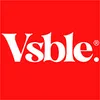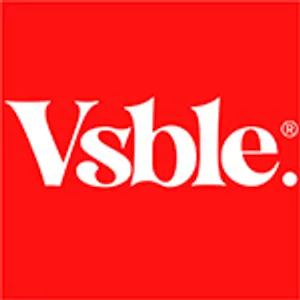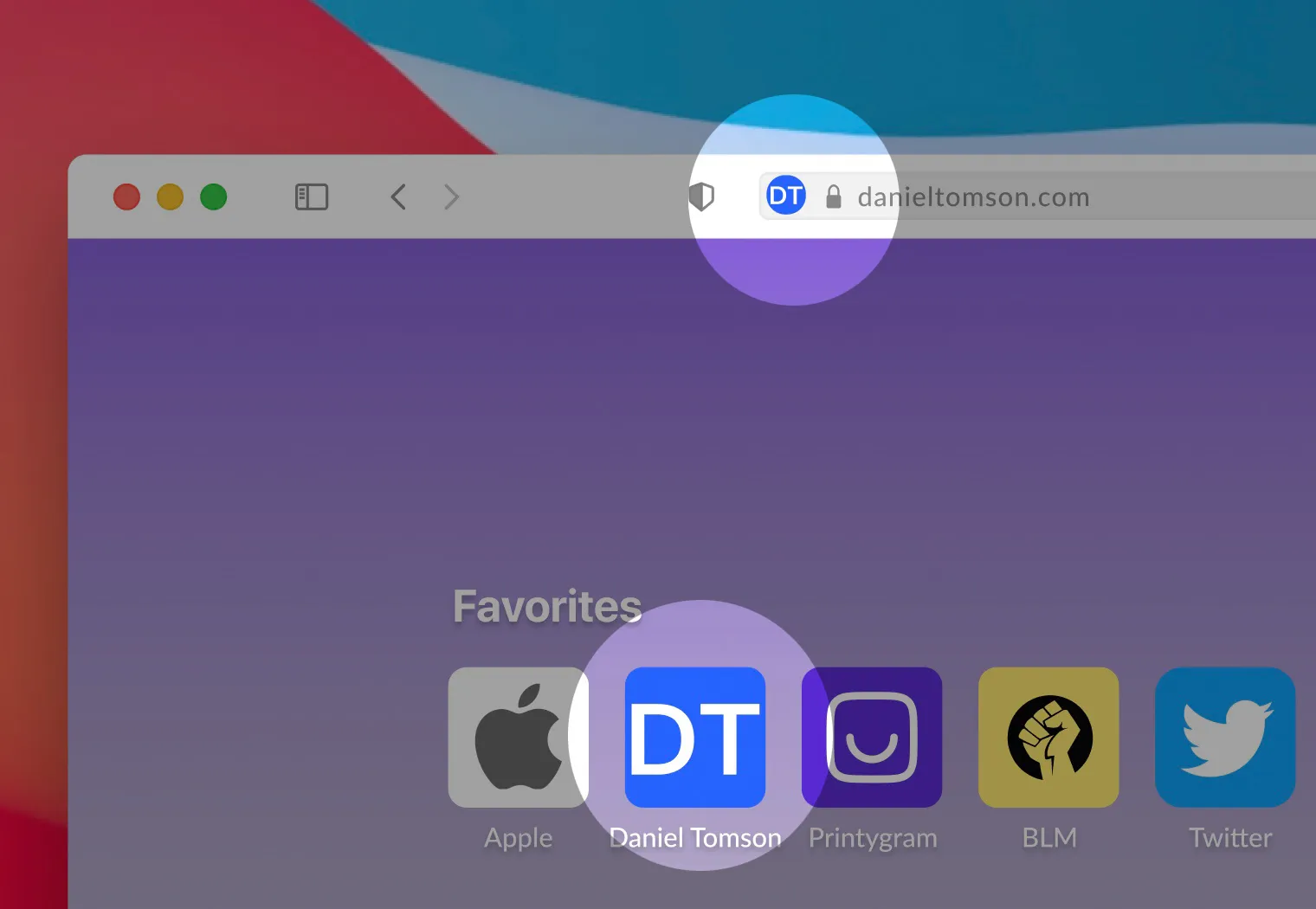What is an online portfolio website?
A portfolio site is an as an online portfolio website. It is crucial for creative professionals. They can showcase their skills and create a positive first impression.. Whether you're a designer, photographer, writer, or developer, a portfolio site is essential. It lets you showcase your work to potential clients and employers. Also, it's a way to make your mom proud.. The best part is that a lot of free options exist for creating a website. You don't have to spend much money to seem professional. This allows you to showcase your photography or design portfolio effectively..
One popular option for free portfoliis a free portfolio website builder Vsble.meA popular option for free portfolios is Vsble.me. It is a free website builder, widely chosen by users.. This platform lets you create and share your work globally. Alternatively, show it to high school classmates you haven't seen in years.. This platform is a great choice for designers, photographers, and other visual artists who want to show off their skills without spending a fortune. It offers a variety of templates to choose from. You can make your portfolio look like a million bucks without actually spending it or hiring a graphic designer.
.jpeg)
Vsble is made for creative artists.
Vsble is also a great option and a great portfolio builder for designers and illustrators who want to show off their skills without spending a fortune, unless you count the amount of coffee consumed during the design process. It offers a simple and easy-to-use interface, so even if you're not tech-savvy, you can create a portfolio to showcase your work.
Another great option and great alternative to adobe portfolio is Webflow . It is tailored towards web developers and programmers, because let's face it, they don't have time for anything else. It offers a wide range of templates and customization options. You can make your portfolio look like it was designed by a professional, even if you're not one. Plus, it allows you to easily integrate your code and projects into your portfolio, so you can show off your nerdy side.
.jpeg)
Finally, if you're a writer or journalist, a widely used open-source content management system like Wordpressis a great option to showcase your work, or if you want to sound fancy, a "blog". This platform is a powerful content management system that allows you to easily create and manage a website. You can show off your writing skills without spending a fortune on a website designer. You can choose from a wide variety of templates and customize your website to suit your needs, and make your portfolio look like a professional wrote it, even if you did it yourself.
.jpeg)
In summary, there are many free options available for creating a website, whether you're a designer, photographer, writer, or developer. By using one of these options, you can create a professional-looking website, and showcase your work to the world, or at least to your potential clients and employers. So, don't be afraid to be creative and have fun with it!
What are the benefits of your free portfolio website?
Creating a free online portfolio also has a few other important key benefits, such as:
1.They are good value for money
The most obvious benefit is that it is free to make and keep up to date. This makes it a good choice for anyone who wants to show off their work without breaking the bank.
2. Accessibility
Accessibility: A portfolio website lets you show your work to people all over the world. This makes it easy for potential clients and employers to find your work and look at it, no matter where they are.
3.Professionalism
Your work will seem more professional and trustworthy if you have an own ´ website for your portfolio. This is because it shows that you are serious about your craft and are taking steps to promote and market yourself.
4. Personalization
Many website hosts have templates and options that can be changed. This way you can make your portfolio fit your needs and show off your work in the best way possible.
5. Being adaptable
If you have a website for your portfolio, you can update it and add new projects as you finish them. This keeps your portfolio up-to-date and useful.
6. Control
By having your own website for your portfolio, you have full control over how your work is shown. You can choose how to organize your projects and how much information to give about each one.
To sum up, portfolio websites are a cheap, easy-to-use, professional, personalized, flexible, and controlled way to show off your work to the world and promote yourself to potential clients and employers.
What should yo include in your portfolio website?
When making a website for your portfolio, it's important to include the following to make it work:
1. Easy to use and understand
A clear and simple way to get around: Make sure your website for your portfolio is easy to use so that people can quickly find the information they need.
.jpeg)
2. About me page
A professional headshot and bio: Give visitors an idea of who you are and what you do by including a professional headshot of yourself and a short bio.
3.Works that were chosen: quality over quantity
Include a wide range of high-quality samples of your work that show off your skills and abilities. Make sure to add pictures, videos, and other forms of media to help people understand your work better.
4.Context and information about the project
nclude a detailed description of each project, including the goal of the project, your role in it, and any special techniques or technologies that were used.
.jpeg)
5.Prove you have experience and are valued
Testimonials or references: Including testimonials or references from clients or employers is a great way to build credibility and put your work in a good light.
6.Make it easy for potential customers to get in touch with you.
Contact information: Include your email address and links to your social media accounts so that people can easily get in touch with you.
.jpeg)
7. Make sure your portfolio site works on all devices.
Responsive design: Make sure that your website is responsive and can be viewed on a desktop computer, a tablet, and a phone.
In short, your website should be easy to navigate, have a professional headshot and bio, high-quality work samples, detailed and organized project details, testimonials or references, contact information, and a responsive design so that it can be viewed on different devices. With these parts, your website will do a good job of showing potential clients and employers what you can do.
How to get started with your free portfolio website?
Choose a template that suits your work best
Selecting the right design template for your online portfolio is important because it can greatly impact the overall user experience and effectiveness of the website. For example, a photographer's website should have a design template that is visually appealing and showcases their work in a professional and effective manner. A template that is well-suited for a personal portfolio website should be able to display images and videos in a clean and organized way, allowing visitors to easily view and navigate through the photographer's portfolio. A design template that is not well-suited for a photographer's website may not provide the right layout and functionality needed to effectively showcase their work, which could ultimately lead to a poor user experience. In summary, web design plays a critical role in creating an effective and engaging personal or digital portfolio for a photographer, and choosing the right template is an important step in achieving this goal. Vsble has many templates that look impressive and are easy to navigate. You can start your free portfolio with one of the four included design templates.
Customize your Logo, Colors & Fonts
You can customize easily your website with custom logo and styling. This has high impact on your overall brand appearance. The more your website is individualized, the stronger is your brand identity and the better it can be distinguished and remembered.
Upload your favicon and open graph image
A favicon is a small icon that appears in a browser's address bar or tab next to the web page title. It helps users quickly identify your website when they have multiple tabs open, and can also make it more visually appealing.
.jpeg)
An Open Graph image is a specific image that is designated to be used when a webpage is shared for example on Instagram, LinkedIn or Facebook. It helps to make the shared link more visually appealing and engaging, which can increase the likelihood that it will be clicked on.
.jpeg)
Both a favicon and Open Graph image can help to increase brand recognition and make your website more visually appealing, which can lead to increased engagement and traffic. Also, having these images can give a professional touch to your website, which can help to build trust with your visitors.
Optimize your SEO
SEO, or search engine optimization, is the process of improving the visibility and ranking of a website or a web page on search engine result pages (SERPs). The higher a website or page appears on SERPs, the more likely it is to be visited by users.
.jpeg)
Optimizing SEO is important because it can help to increase the visibility and credibility of a website, which can lead to more traffic, higher conversion rates, and ultimately, more revenue.
Some simple but effective examples to improve SEO are:
Use keyword-rich titles and descriptions for your web pages
Include alt tags for images, so that search engines can understand what the image is about
Use header tags (H1, H2, H3) to structure your content and make it easier to read
.jpeg)
Create high-quality and unique content that is relevant to your target audience
Get backlinks from reputable websites to show search engines that your site is credible and valuable.
Use responsive design and mobile-friendly site.
.jpeg)
Use structured data markups to help search engines understand the information on your website.
It's important to remember that SEO is a continuous process, and the algorithms used by search engines are constantly changing. In order to maintain good rankings, it is important to stay informed about the latest best practices and make changes to your website as needed.
Connect your custom domain
A first-level domain (TLD) is the last part of a domain name, such as .com, .org, .edu, etc. Having a first-level domain is important because it can help to set up credibility and professionalism for your website, and also it makes your website easily recognizable and memorable for your users.
.jpeg)
For example, a website with a .com TLD is generally considered more credible and trustworthy than a website with a .info TLD. And having a TLD that is relevant to your industry, like .edu for educational institutions or .gov for government organizations, can also help to set up credibility.
Another important aspect is that having a first level domain can also help with SEO, as it can make it easier for search engines to understand the relevance and authority of your website.
Regarding SSL, it stands for Secure Sockets Layer, and it is a standard security protocol used to set up a secure and encrypted connection between a web server and a web browser. This is important because it helps to protect sensitive information, such as login credentials and personal data, from being intercepted by hackers or other malicious actors.
Having an SSL certificate on your website also helps to set up trust with your users, as it indicates that your website is secure and that their personal information is being protected. Also, it can also improve your website's SEO, as many search engines now consider SSL as a ranking factor.
Vsble allows you both; connect any first level domain you already own, or a fresh one you get from the provider of your choice, and also, Vsble also provide you a free SSL that you can use with your connected domain.
In summary, having a first-level domain can help set up credibility and professionalism, and also help with SEO. And having SSL can protect sensitive information and set up trust with users, as well as help with SEO.
Create your portfolio structure and upload your work
Create navigation menu using simple drag & drop. You can add pages in the header of the page and in the so called footer. Typically you would add paged in the header that are important to navigate the visitors through your portfolio, and add pages in the footer for legal info such as privacy policy, terms and contact information. Once you have your website navigation structure structure ready you can start uploading your work. No worries can change your navigation structure anytime.
Add an about you page and a contact page
As mentioned already earlier, adding your contact page is crucial as the potential client need a way to contact you. Also adding an "about me" page can be good for to outline your past experiences, your education or your special skills. Adding a photo can be add a nice touch. Most clients would like to know a little about you, before contacting you - so providing a short intro might be a good idea. But don't overdo it;) Praising yourself too much or writing several thousand words about yourself might rather scare off a potential client then attract him
.jpeg)
How to market your portfolio website?
Connect a newsletter tool.
.jpeg)
A newsletter is an email that is sent out to a list of subscribers on a regular basis. It can be used to share information, updates, promotions, and other content with your audience.
A newsletter tool is a software or platform that helps you to create, manage, and send out newsletters to your subscribers. There are many benefits of using a newsletter tool, especially if you are in a creative industry like photography and also if have an online store added to your website. Some of these benefits include:
Building a relationship with your audience: A newsletter is a great way to connect with your audience and build a relationship with them. By regularly sending out valuable content, you can keep your audience engaged and interested in your work.
Promoting your work: A newsletter is also a great way to promote your work and showcase your photography to a wider audience. You can use it to promote your latest projects, share behind-the-scenes footage, and offer special promotions.
Staying top-of-mind: By regularly sending out newsletters, you can stay top-of-mind with your audience. This can help increase the chances of them reaching out to you for photography services or recommending you to others.
Automating your marketing: A newsletter tool can automate your marketing efforts, allowing you to focus on creating great photography. You can schedule your newsletters in advance, and even set up automated welcome emails for new subscribers.
Measuring success: Most of the Newsletter tools come with analytics that can help you measure the success of your newsletters. This can help you to understand what is working and what is not, allowing you to make data-driven decisions about your marketing efforts.
To sum up, a newsletter tool can be very good for for industry like photography or any other creative industry . It can help you build a relationship with your audience, promote your work, stay top-of-mind, automate your marketing and measure the success of your efforts.
Post your website link on your social media profiles and build backlinks.
Posting your website link and building backlinks on blogs and client websites are important for a few reasons:
Building visibility: By posting your website links, you can increase visibility for your website. This can help to drive more traffic to your website, which can lead to more leads, sales, and revenue.
Improving SEO: Building backlinks is a crucial part of SEO. When other websites link to your website, it sends signals to search engines that your website is valuable and credible. This can help to improve your website's search engine rankings.
Building authority: Building backlinks on reputable websites can help to set up your website as an authority in your industry. This can help to build trust with your audience and increase the chances of them becoming customers or clients.
Networking: By building backlinks on other websites, you can also set up relationships with other industry professionals. This can open up new opportunities for collaborations, partnerships, and even new business.
To put it simply, posting your website link can help increase visibility and drive traffic. Building backlinks on other websites can improve your website's search engine rankings, set up your website as an authority, and provide networking opportunities.
Important things to consider for your portfolio website
Keep your portfolio updated
As a visual creator, it's important to update your portfolio regularly for a few reasons:
Showcasing your latest work: If you don't update your portfolio, people will think your skills have gone stale, like a piece of bread left out in the open. By regularly adding new and fresh projects, you can showcase your latest work and show that you are still active and creating new things.
Staying relevant: The world of visual creation is always changing, like fashion. If you don't update your portfolio regularly, your work may become outdated and not relevant to your target audience. By regularly updating your portfolio, you can ensure that your work is always fresh and relevant.
Attracting new clients: Your portfolio is your calling card to the world. If your portfolio is outdated, potential clients may think you're not interested in new work and move on to the next person. By regularly updating your portfolio, you can show that you are actively looking for new work and open to new opportunities.
Keeping your portfolio organized: Keeping your portfolio updated is also important for your own organizational purposes. Like a filing cabinet, you want to keep it clean and easy to find what you're looking for. By regularly adding new projects and removing old ones, you can keep your portfolio organized and easy to navigate.
In summary, updating your website regularly as a visual creator is important because it allows you to showcase your latest work, stay relevant, attract new clients, and keep your portfolio organized. So, don't let your portfolio go stale. Keep it fresh and updated, like a good cup of coffee.
Create imprint & privacy pages
An imprint and privacy page are important for a few reasons, especially in regard to GDPR:
Transparency: An imprint page is a legal requirement in many countries and it provides important information about the website owner, such as contact details and company information. This helps to establish transparency and trust with your audience.
Compliance: A privacy page is also important. It allows you to clearly explain how you collect, use, and protect personal data. This is especially important in light of the General Data Protection Regulation (GDPR), which is a set of laws in the European Union (EU) that govern the handling of personal data. By having a clear and compliant privacy page, you can show that you are taking steps to protect the personal data of your users.
Legal protection: By including an imprint and privacy page on your website, you can protect yourself from potential legal issues. If a user has a complaint or concern, they can refer to your imprint and privacy page to understand your policies and procedures.
Consumer protection: By providing an imprint and privacy page, you can also help protect your users. They can be aware of the information you are collecting and how it is used, and also how to contact the website owner in case of any issue.
.jpeg)
To explain in simple terms, an imprint and privacy page are like a "map" and a "guidebook" for your website. An imprint page provides information about who is in charge of for the website and how to contact them, while a privacy page explains how you deal with personal information. Both are important to establish trust, comply with laws, protect yourself legally and protect your users.
5 unique examples of portfolio websites built with Vsble.
Andrei Proko
is a filmmaker, photographer and art director based in Paris.His surreal vision, his liquid mixing techniques and his use of vivid electric colours result in bold compositions of a timeless style.He has worked for chanel, hermès, courrèges, citroën, among others.
.jpeg)
Valeria Della Valle
Valeria Della Valle is an editor, creative consultant & producer based between London, Paris and Milan. She currently holds the position of managing editor at Dazed & Confused magazine. Due to her deep understanding of publishing and long-time experience in the media industry, Valeria has worked on books, special projects and iconic titles developing creative strategies, delivering original content and overseeing the print process. She is the co-founder & editor-in-chief of the independent publication Dada Zine. Previously she has been managing editor and digital editor at Purple Fashion.
.jpeg)
Caroline Heinecke
Caroline Heinecke, born in 1986 in Nordhausen in Thuringia in the Harz region, lives, and works in Berlin. She studied visual communication at the Anhalt University of Applied Sciences in Dessau. In 2017, she decided to express her flair for compositions of colors, shapes and arrangements through another medium – photography. Heinecke studied at the Ostkreuzschule für Fotografie in Berlin from 2017-2020. She is passionate about still life and fine art photography. The patient objects are often supporting actors until the photographer lets us look through their eyes. The reality reflected in her photographs appears slightly enraptured, two-dimensional, as it were centered and alive in its motionlessness. Starting from staged things and situations, she creates a visual world that deals with themes such as niche societies, identity, and the future. Also to various group exhibitions such as 2022 at Les Rencontres de la Photographie d’Arles or Copenhagen Photo Festival (2020), LUMIX Festival (2020), she can look back on a number of publications, including in the photo magazines “Der Greif”, “Photonews” and “Stern Magazine”.
.jpeg)
Diego Mallo
Diego Mallo is a visual artist and illustrator whose work mainly includes book covers, editorial illustration, and portraiture. From conceptual illustrations to expressive portraits his images are not only clean and direct but also invite one to read between the lines. He builds his images from gestural drawing, paper cuts, monoprint, or photomontage. According to the needs of the work, he uses color in a sober and symbolic way or in a playful and vibrant manner.He is particularly interested in body language, human relations, and philosophy: topics that he often approaches from an angle of absurdity or humour. He has had exhibitions across Europe including the UK, Switzerland, Germany, Portugal, and Spain, as well as in Malaysia and Korea. Since 2019, he has been a teacher and coordinator of the CP of illustration at CIFO L'Hospitalet in Barcelona. He also runs workshops on illustration, drawing and creativity.
.jpeg)
Sergio Lanzass
Sergio is a Spanish native creative based in Jaén, Spain. He is a designer who fell in love with video editing, but still loves to design. He is currently working worldwide as freelance on projects regarding video, graphic design, motion graphics and much more.
.jpeg)





